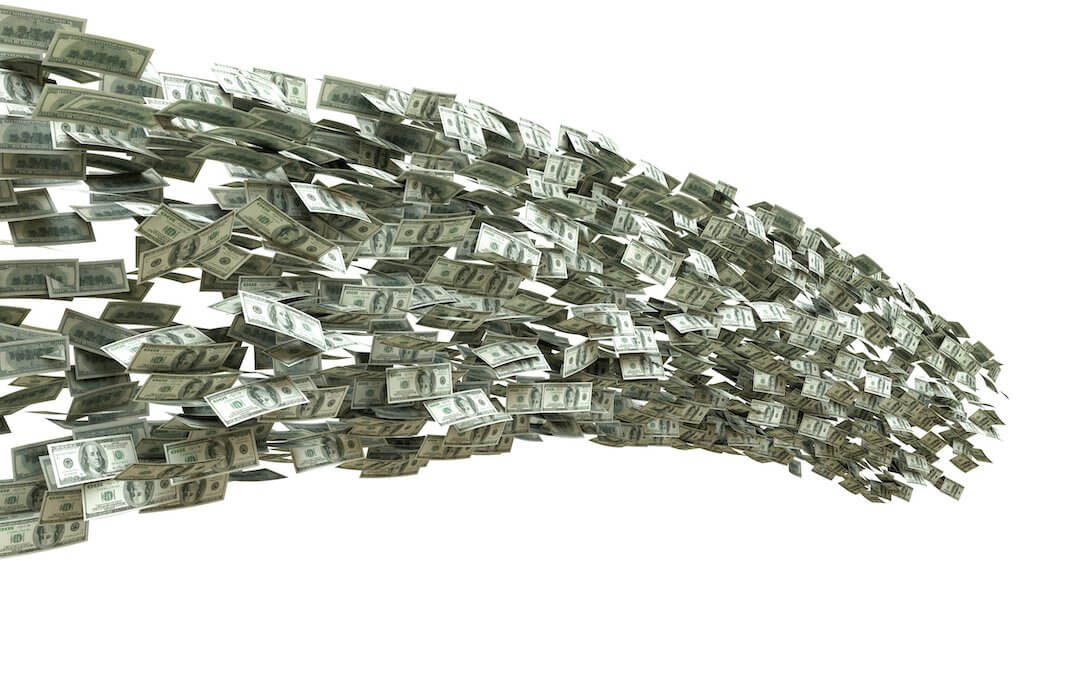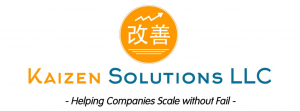Boeing’s 737 Max issues highlighted the company’s sacrifice of safety for financial performance, resulting in a tarnished reputation. The prioritization of profit over core values also damaged the FAA’s credibility and revealed a lack of accountability for top executives. This downfall serves as a reminder of the importance of maintaining core values and prioritizing them over short-term financial gains.

Understanding and Optimizing Your Cash Conversion Cycle
Many companies struggle with understanding their Cash Conversion Cycle and how it impacts their growth. The Cash Conversion Cycle is the time taken from when you first engage with a potential client to being paid for the work you do or the product you deliver. Companies need cash to fund growth, and profit is not the same as cash flow. A longer Cash Conversion Cycle requires more cash for growth and external sources, which may not always be available at economically viable rates.
Components of the Cash Conversion Cycle
The Cash Conversion Cycle can be broken down into four components: Sales Cycle, Make/Production & Inventory Cycle, Delivery Cycle, and Billing and Payments Cycle. Each component varies in duration for different companies and industries. For example, Company X might have a 120-day Cash Conversion Cycle comprising 40 days for Sales, 30 days for Make/Production and Inventory, 5 days for Delivery, and 45 days for Billing and Payments. The challenge is to reduce the length of the cycle.
Three Ways to Improve the Cash Conversion Cycle
- Eliminate Mistakes: The easiest way to improve your Cash Conversion Cycle is by identifying and rectifying mistakes that lead to delays in each component of the cycle. Work with your team to pinpoint the most significant errors and implement a program to reduce them. Measure your cycles and errors to minimize delays in your Cash Conversion Cycle.
- Shorten Cycle Times: Investigate cycle times and underlying processes for improvement opportunities. This step is slightly more complex, as it requires reevaluating your existing processes and asking deeper questions. Tom Wujec’s “How to Make Toast” exercise can help visualize the process, break it down into manageable steps, and identify areas of improvement. See below.
- Improve Business Model: The final method to enhance your Cash Conversion Cycle involves refining your business model. Look for ways to optimize each component of the cycle by eliminating inefficiencies and streamlining processes.
Understanding and optimizing your Cash Conversion Cycle is crucial for business growth. By focusing on eliminating mistakes, shortening cycle times, and improving your business model, you can reduce the time it takes to convert your efforts into cash and, ultimately, fuel your company’s growth.
Asking the Right Questions: Challenging the Status Quo
Another way to improve cycle times is by questioning the existing method and exploring alternative approaches. This process can be challenging due to built-in biases but can lead to significant improvements with the help of a skilled facilitator.
Using the 5 Whys Technique
The 5 Whys technique is powerful in identifying the root cause of problems, understanding process relationships, and eliminating assumptions or biases. This method is highly effective without the need for complicated evaluation techniques.
Improving the Business Model: A Challenging but Rewarding Approach
The most challenging but potentially most rewarding method to improve the Cash Conversion Cycle is reevaluating and adjusting your business model. A famous example of this approach is Dell Computers, which dramatically improved its cycle by adopting a build-to-order model. This section will further explain how Dell achieved a reduction in its Cash Conversion Cycle through strategic changes in its business model.
Dell’s Transformation: The Build-to-Order Model
Dell Computers decided to manufacture computers only when customers placed orders. Doing so shifted their business model from a traditional inventory-based approach to a customer-centric, build-to-order model. This change led to significant improvements in each component of their Cash Conversion Cycle, as outlined below:
-
Sales Cycle: As customers customized their computers during the ordering process, Dell was able to streamline its sales cycle. The company no longer needed to carry a wide range of pre-built computers, enabling them to better target their marketing and sales efforts.
-
Make/Production & Inventory Cycle: Dell’s build-to-order model significantly reduced the need for finished inventory. They only had to maintain a minimal level of inventory for components required for custom orders. This approach also reduced the risk of obsolete inventory, as Dell only purchased components in response to specific orders.
-
Delivery Cycle: By having customers pay for their computers when placing orders, the delivery cycle’s impact on the Cash Conversion Cycle became less significant. Dell could focus on efficient production and timely delivery without worrying about the cash tied up in finished goods.
-
Billing and Payments Cycle: With customers paying upfront for their orders, Dell eliminated the need for a lengthy billing and payments cycle. The company received cash from sales before starting production, freeing up working capital and reducing the time it took to collect payment.
The Result: A Negative Cash Conversion Cycle
As a result of these strategic changes in their business model, Dell reduced its Cash Conversion Cycle from 63 days to an impressive -39 days. This negative cycle meant that Dell effectively used its customers’ cash to fund its growth, eliminating the need for external financing and improving overall cash flow.
Dell’s success story exemplifies the potential benefits of rethinking your business model to improve the Cash Conversion Cycle. By identifying areas of inefficiency in your current model and exploring innovative alternatives, you can significantly reduce your reliance on external financing sources and drive sustainable growth.
However, it’s essential to keep in mind that the right approach for your business may differ from that of Dell or others. The key is to analyze your unique situation, understand the challenges specific to your industry, and find innovative solutions that best align with your company’s goals and resources.
Are You Optimizing Your Cash Conversion Cycle?
Understanding and optimizing your Cash Conversion Cycle can reduce your reliance on bank lines of credit and other debt sources. If you need help determining your cycle and shortening it, consider reaching out to a professional for guidance.
Copyright (c) 2021, Marc A Borrelli
Recent Posts
The Downfall of Boeing: A Lesson in Core Values
Resolutions, Here We Go Again.
In reflecting on 2021 resolutions, the author scored themselves in three categories and sought to improve success in 2022 by addressing friction points. Drawing on advice from social psychologist Wendy Wood, the author identified areas to reduce or increase friction in their failed resolutions. By making these adjustments, the author aims to enhance their goal achievement and encourages others to consider friction when setting resolutions.
You need to take an extended vacation. No, seriously, you do.
COVID has taken a toll on all of us. If you have not taken an extended vacation in a while where you disconnect, you need to now. You and your business will benefit.
Becoming Famous in Your Niche: The Success Story of Linn Products Limited
In a previous discussion, I highlighted the importance of being famous for something. Being well-known in your niche can help you: Concentrate on your strengths Connect with your target audience Communicate your offerings more effectively Receive referrals Identify...
Understanding and Optimizing Your Cash Conversion Cycle
Understanding and optimizing the Cash Conversion Cycle is crucial for business growth, as it impacts cash flow and the ability to access external capital. This cycle consists of four components: Sales, Make/Production & Inventory, Delivery, and Billing and Payments. To improve the Cash Conversion Cycle, companies can eliminate mistakes, shorten cycle times, and revamp their business models.
Discovering Your Niche: Why You Need to Be Famous for Something
As an entrepreneur, it’s crucial to specialize in a specific area and become famous for something, allowing you to generate referrals and build your brand. Understanding the “job” you’re hired for helps you stand out in the marketplace and communicate your value proposition effectively. By providing value to your clients, you can adopt a value-based pricing approach, ensuring your business remains competitive and maintains a strong market presence.
Rethinking Your Pricing Model: Maximizing Margins and Providing Value
Rethink your pricing model by focusing on the value you provide and your customers’ Best Alternative To a Negotiated Agreement (BATNA). This approach can help you maximize margins while delivering better value to your clients. Assess your offerings and brainstorm with your team to identify pricing adjustment opportunities or eliminate commodity products or services.
Do you know your Profit per X to drive dramatic growth?
I recently facilitated a workshop with several CEOs where we worked on the dramatic business growth model components. One of the questions that I had asked them beforehand was, "What is Your Profit/X?" The results showed that there this concept is not clear to many....
The War for Talent: 5 Ways to Attract the Best Employees
In today’s War for Talent, attracting the best employees requires a focus on value creation, core customer, brand promise, and value delivery. Clearly articulate your company’s mission, identify your “core employee” based on shared values, and offer more than just a salary to stand out as an employer. Utilize employee satisfaction metrics and showcase your company’s commitment to its workforce on your website to make a strong impression on potential candidates.
Are you killing your firm’s WFH productivity?
Productivity remained during WFH with COVID. However, further analysis found that hourly productivity fell and was compensated for by employees working more hours. What was the culprit – Meetings. Want to increase productivity, have fewer meetings.













